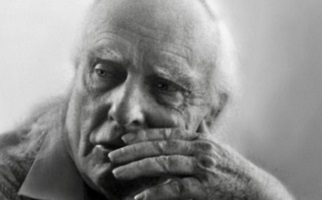William Labov an influential Sociolinguist
William Labov
William Labov an influential Sociolinguist, (Passaic, 1927) American linguist. He has worked, above all, in the field of sociolinguistics. He is the creator of the concept of linguistic variation. Among his works, it is worth mentioning Hypercorrection of the middle class as a factor of linguistic change (1966), in collaboration with Yaeger and Steiner, A quantitative study of phonetic change (1972), The continuous and the discrete in language (1977), Principles of Linguistic Change. Volume 1: Internal Factors (Leonard Bloomfield LSA 1996 Award). President of the Linguistic Society of America since 1979 and member of the National Academy of Sciences since 1993.

Works of William Labov
Las obras de Labov incluyen The Study of Nonstandard English (1969), Language in the Inner City: Studies in Black English Vernacular (1972), Sociolinguistic Patterns (1972), Principles of Linguistic Change (vol. I Internal Factors, 1994; vol.II Social Factors, 2001, vol.III Cognitive and Cultural Factors, 2010) y, con Sharon Ash y Charles Boberg , The Atlas of North American English (2006).
Labov was awarded the 2013 Benjamin Franklin Medal in Computing and Cognitive Science by the Franklin Institute with the citation “[p]o establish the cognitive basis of language variation and change through rigorous analysis of linguistic data, and for the study of non-standard dialects with important social and cultural implications.”
language in use
In “Narrative Analysis: Oral Versions of Personal Experience”, Labov, with Joshua Waletzky, takes a sociolinguistic approach to examining how language works between people. This is significant because it contextualizes the study of structure and form, connecting purpose with method. The stated purpose of it is to “isolate the elements of the narrative”. This work focuses exclusively on oral narratives.
Labov describes narrative as having two functions: referential and evaluative, with its referential functions guiding and grounding a story in its contextual world by referring to events in sequential order as they originally occurred, and its evaluative functions describing the narrator‘s purpose. when telling the story. history. Formally analyzing data from orally generated texts obtained through observed group interaction and interviews (600 interviews were taken from various studies whose participants included ethnically diverse groups of children and adults of diverse backgrounds , Labov divides the into five or six sections:
- Summary – Provides an overview of the story.
- Orientation – Labov describes this as “referential [free clauses that] serve to orient the listener with respect to person, place, time, and behavioral situation.” [11] He specifies that these are contextual clues that precede the main story.
- Complication – The main story, during which the narrative unfolds. A story can consist of multiple complicating sections.
- Evaluation : The author demonstrates self-awareness, giving an explicit or implicit purpose to the retelling of the story. Thus, the evaluation gives some indication of the importance the author attaches to his story. But the evaluation can be done subtly: for example, “lexical enhancers [are a type of] semantically defined evaluation.”
- Resolution – Occurs sequentially after evaluation. Resolution can give the story a sense of completion.
- Coda – Returns the listener to the present, taking them out of the world of the story into the world of the narrative event. A coda is not essential to a narrative, and some narratives do not have one.
While not all narratives include all of these elements, the purpose of this subsection is to show that narratives have an inherent structural order. Labov argues that narrative units must retell events in the order in which they were experienced because the narrative has a temporal sequence . In other words, the events do not occur randomly but are connected to each other; thus “the original semantic interpretation” depends on its original order. To demonstrate this sequence, he divides a story into its basic parts.
He defines the narrative clause as the “basic unit of the narrative” around which everything else is built. The clauses can be distinguished from one another by temporal junctures ,indicating a change in time, and separate narrative clauses. Temporal junctures mark the temporal sequence because clauses cannot be rearranged without altering their meaning.
Labov and Waletzky’s findings are important because they derived them from actual data rather than abstract theorizing (a descriptive rather than a prescriptive approach). Labov, Waletzky, etc., arranged interviews and documented speech patterns in the narrative, maintaining the ethnographic tradition of recording oral texts so that they can be accurately referenced. This inductive method creates a new system through which to understand the text of the story.
Honors of William Labov
In 2013 Labov received an award from the Franklin Institute for Computing and Cognitive Sciences for “establishing the cognitive basis of language variation and change through rigorous analysis of linguistic data and for the study of non-standard dialects with important social and cultural implications.” cultural”.
In 2015, the British Academy awarded him the Neil and Saras Smith Medal in Linguistics “for his lifetime achievement in the academic study of linguistics” and “his significant contribution to linguistics and language sciences”.
In 2020, Labov will receive the Talcott Parsons Award from the American Academy of Arts and Sciences, which recognizes “distinguished and original contributions to the social sciences.”



